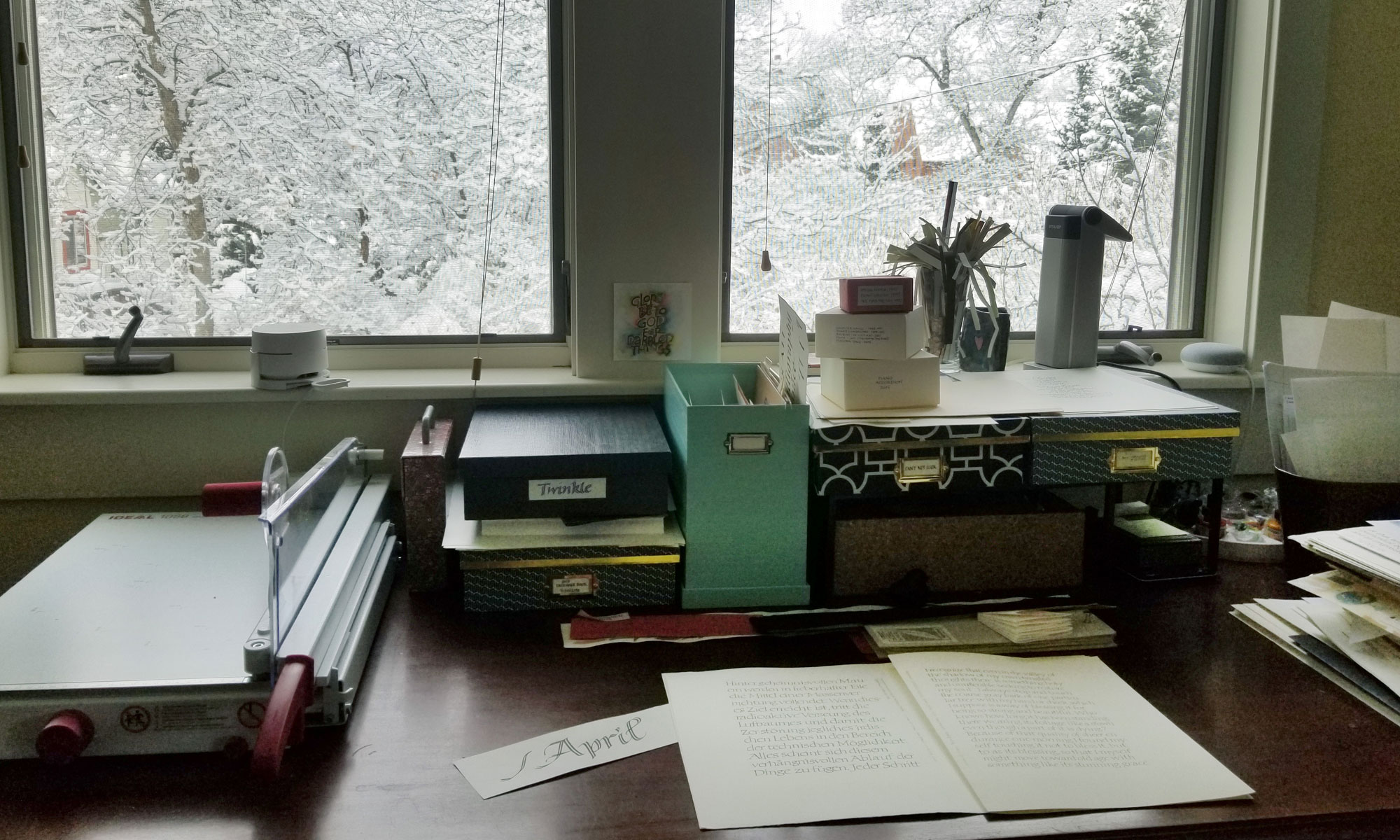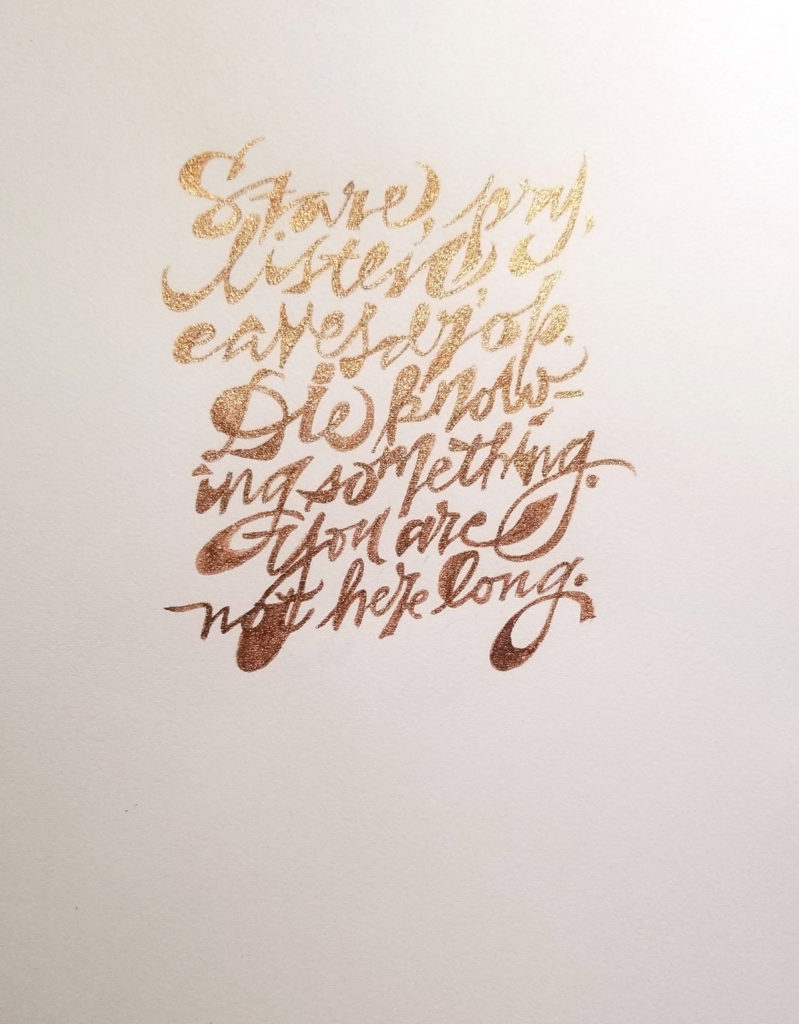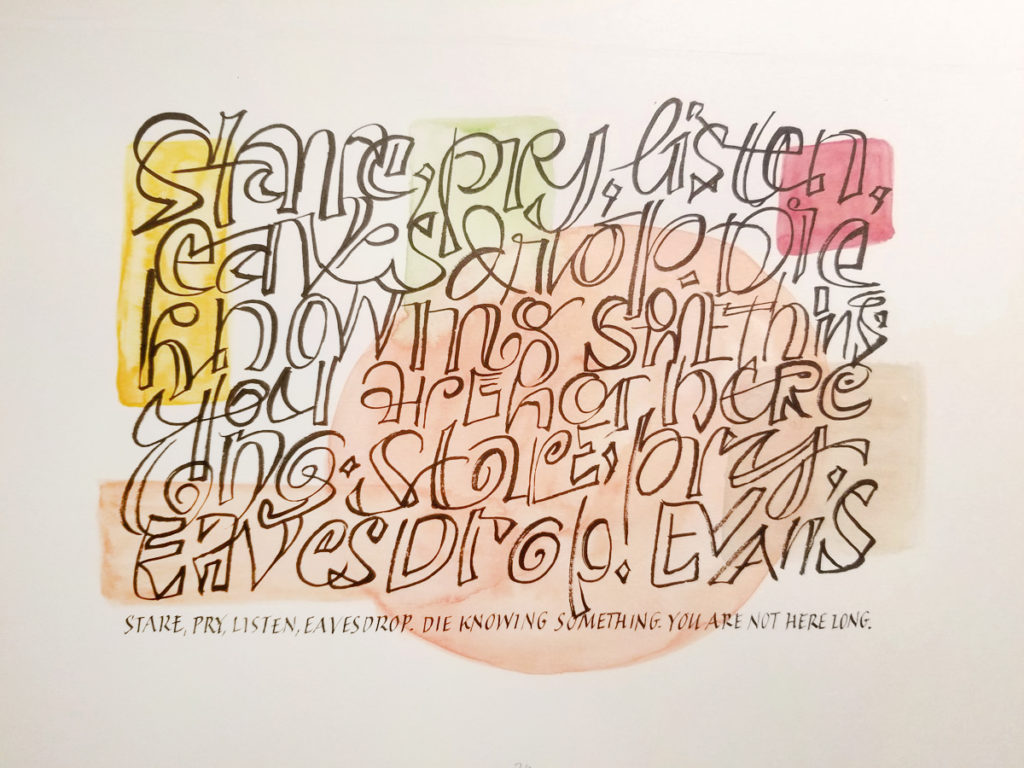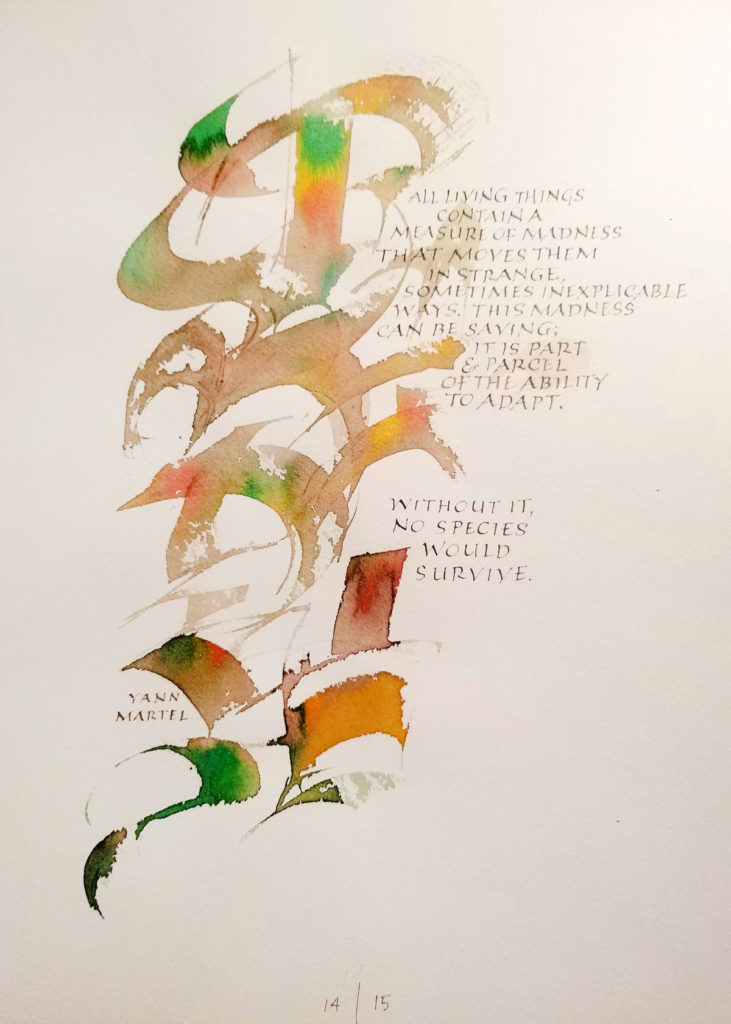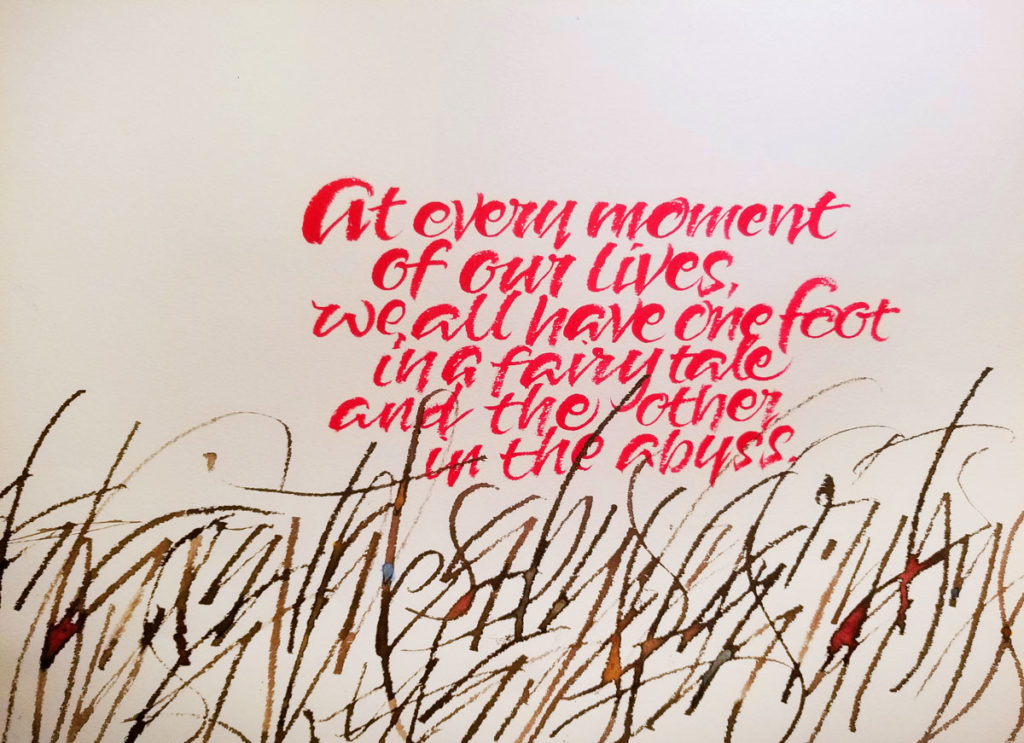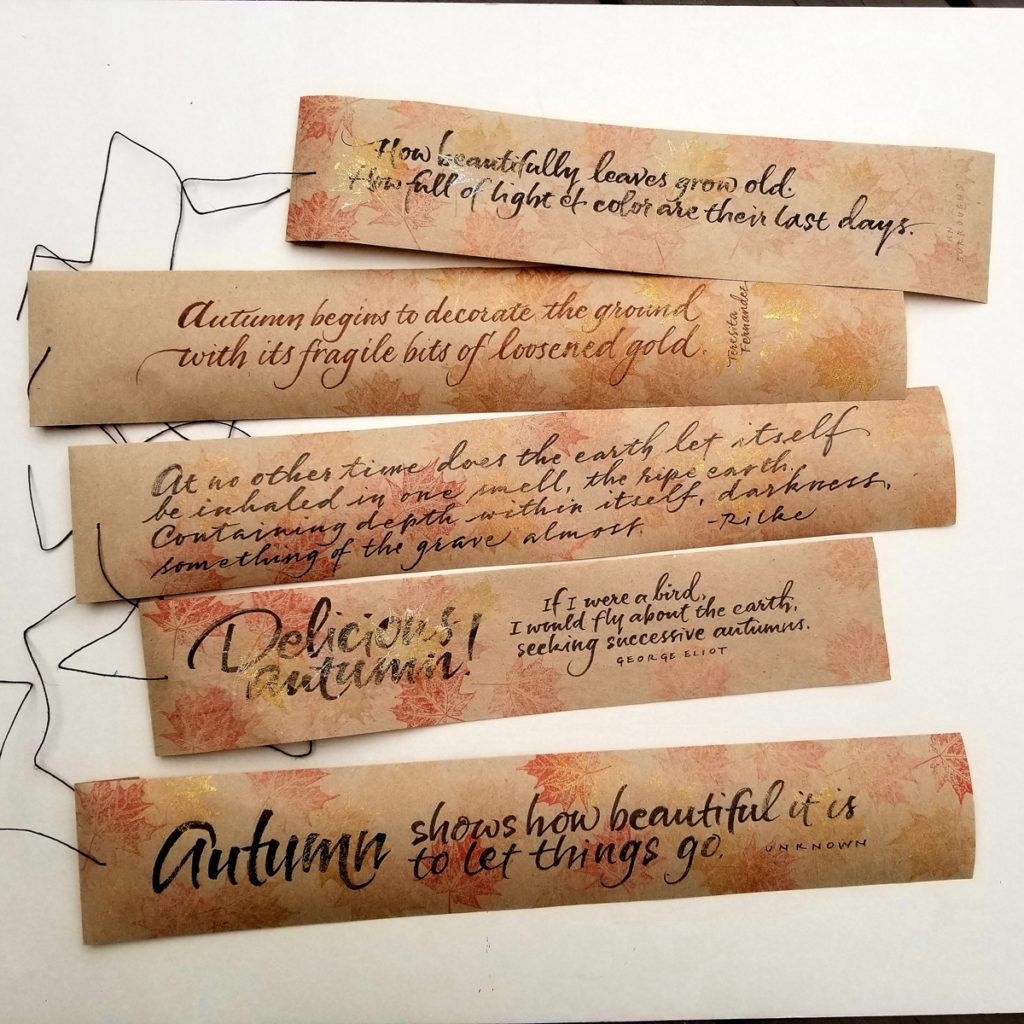Pentel Color Brushes are the bomb! And so are Bister inks. It was only a matter of time before I would combine them.
I’m continuing to enjoy Elizabeth McKee’s brush lettering class, so much so that my current book edition (going out the door tomorrow) is brush lettered. I’ve fiddled around with the Pentel Color Brush (PCB) a lot — emptying them, dipping them in watercolors and other inks, even using them as-is. The other day I emptied a nearly spent extra-fine PCB and refilled it with Bister inks. I have also been experimenting with making videos. So … here’s a video of me refilling a PCB with Bister inks. It turns out that Pentel Color Brushes and Bister inks go together well. I strained my ink through cheesecloth to keep out the undissolved Bister crystals.
I show the PCB already taken apart. Taking apart a PCB is a simple operation. Grasp that black ring at the top of the black barrel with a needle-nose pliers and pull. The central tube will come out pretty easily. Then rinse out (or wash) both the barrel and the central tube. That’s it!
My favorite store for Pentel Color Brushes is JetPens. I’ve used them a lot over the years, especially when I was doing daily alphabets.
